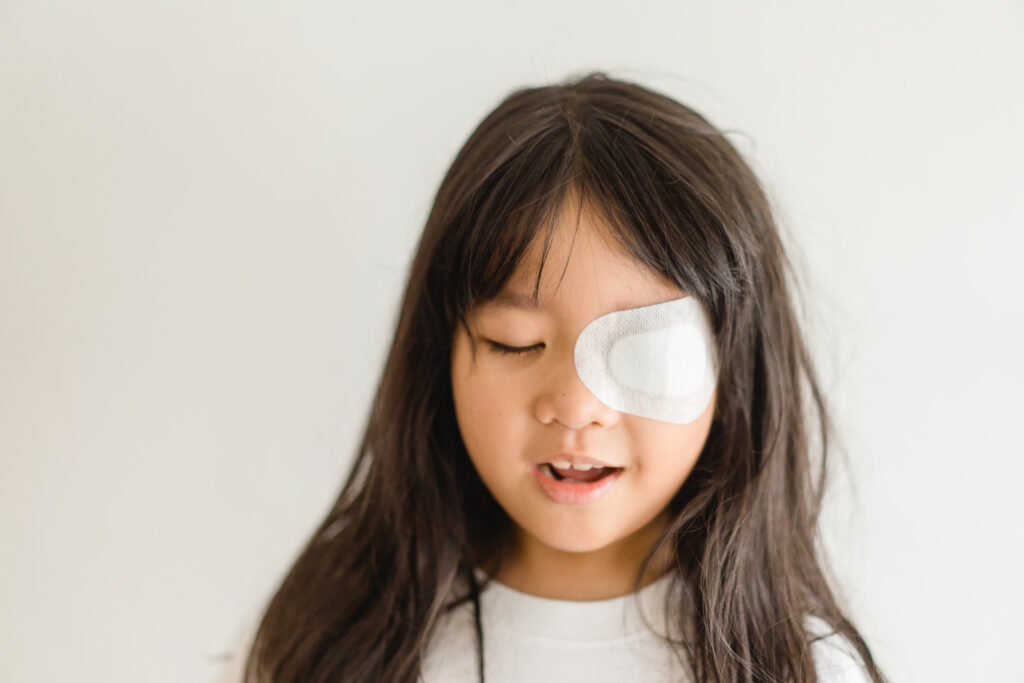
Eye Diseases, Prima Medical Center Saigon
Top Causes of Eye Problems
16 February, 2024
Prima Saigon Eye Hospital: Most people have eye problems at one time or another. Some are minor and will go away on their own, or are easy to treat at home. Others need a specialist’s care.

Prima Saigon Eye Hospital: Whether your vision isn’t what it used to be, or never was that great, there are things you can do to get your eye health back on track.
Whether your vision isn’t what it used to be, or never was that great, there are things you can do to get your eye health back on track. See if any of these common problems sound familiar. And always check with a doctor if your symptoms are really bad or don’t clear up within a few days.
Eyestrain
Anyone who reads for hours, works at a computer, or drives long distances knows about this one. It happens when you overuse your eyes. They get tired and need to rest, just like any other part of your body.
If your eyes feel strained, give them some time off. If they’re still weary after a few days, check with your doctor to make sure it isn’t another problem.
Red Eyes
Your eyes look bloodshot. Why?
Their surface is covered in blood vessels that expand when they’re irritated or infected. That gives your eyes the red look.
Eyestrain can do it, and so can a late night, a lack of sleep, or allergies. If an injury is the cause, get it checked by your doctor.
Red eyes could be a symptom of another eye condition, like conjunctivitis(pinkeye) or sun damage from not wearing shades over the years. If over-the-counter eye drops and rest don’t clear it up, see your doctor.
Night Blindness
Is it hard to see at night, especially while driving? Is it tough to find your way around in dark places, such as movie theaters?
That sounds like night blindness. It’s a symptom, not a problem in its own right. Nearsightedness, cataracts, keratoconus, and a lack of vitamin A all cause a type of night blindness that doctors can fix.
Some people are born with this problem, or it might develop from a degenerative disease involving the retina, and that usually can’t be treated. If you have it, you’ll need to be extra careful in areas of low light.
Lazy Eye
Lazy eye, or amblyopia, happens when one eye doesn’t develop properly. Vision is weaker in that eye, and it tends to move “lazily” around while the other eye stays put. It’s found in infants, children, and adults, and rarely affects both eyes. Treatment needs to be sought immediately for infants and children.

Lazy Eye Treatment @ Prima Saigon Eye Hospital
Lifelong vision problems can be avoided if a lazy eye is detected and treated during early childhood. Treatment includes corrective glasses or contact lenses and using a patch or other strategies to make a child use the lazy eye.
Cross Eyes (Strabismus) and Nystagmus
If your eyes aren’t lined up with each other when you look at something, you could have strabismus. You might also hear it called crossed eyes or walleye.
This problem won’t go away on its own. You’ll need to get an ophthalmologist, or eye specialist, to correct it. With nystagmus, the eye moves or “jiggles” all the time on its own.
There are many treatments, including vision therapy to make your eyes stronger. Surgery is also an option. Your doctor will examine your eyes to see which treatment might work best for you.
Colorblindness
When you can’t see certain colors, or can’t tell the difference between them (usually reds and greens), you may be colorblind. It happens when the color cells in your eye (the doctor will call them cone cells) are absent or don’t work.
When it’s most severe, you can only see in shades of gray, but this is rare. Most people who have it are born with it, but you can get it later in life from certain drugs and diseases. Your doctor can tell you what’s to blame. Men are much more likely to be born with it than women.

Dr An Trinh, Head of Cataract Surgery @ Prima Saigon, is consulting a cataract patient
Your eye doctor can diagnose it with a simple test. There’s no treatment if you’re born with it, but special contacts and glasses can help some people tell the difference between certain colors.
Uveitis
This is the name for a group of diseases that cause inflammation of the uvea. That’s the middle layer of the eye that contains most of the blood vessels.
These diseases can destroy eye tissue, and even cause eye loss. People of all ages can have it. Symptoms may go away quickly or last for a long time.
People with immune system conditions like AIDS, rheumatoid arthritis, or ulcerative colitis may be more likely to have uveitis. Symptoms may include:
- Blurred vision
- Eye pain
- Eye redness
- Light sensitivity
See your doctor if you have these symptoms and they don’t go away within a few days. There are different kinds of treatment for uveitis, depending on the type you have.
Floaters
These are tiny spots or specks that float across your field of vision. Most people notice them in well-lit rooms or outdoors on a bright day.
Floaters are usually normal, but they sometimes can be a sign of a more serious eye problem, like retinal detachment. That’s when the retina at the back of your eye separates from the layer underneath. When this happens, you might also see light flashes along with the floaters or a dark shadow come across the edge of your sight.
If you notice a sudden change in the type or number of spots or flashes you see or a new dark “curtain” in your peripheral vision, go to your eye doctor as soon as possible.
Excess Tearing
It has nothing to do with your feelings. You might be sensitive to light, wind, or temperature changes. Try to protect your eyes by shielding them or wearing sunglasses (go for wraparound frames — they block more wind than other types).
Tearing may also signal a more serious problem, like an eye infection or a blocked tear duct. Your eye doctor can treat or correct both of these conditions.
Conjunctivitis (Pinkeye)
In this condition, tissue that lines the back of your eyelids and covers your sclera gets inflamed. It can cause redness, itching, burning, tearing, discharge, or a feeling that something is in your eye. People of all ages can get it. Causes include infection, exposure to chemicals and irritants, or allergies. Wash your hands often to lower your chance of getting it.
Retinal Disorders
The retina is a thin lining on the back of your eye that is made up of cells that collect images and pass them on to your brain. Retinal disorders block this transfer. There are different types:
-
- Age-related macular degeneration refers to a breakdown of a small portion of the retina called the macula.
- Diabetic retinopathy is damage to the blood vessels in your retina caused by diabetes.
- Retinal detachment happens when the retina separates from the layer underneath.
It’s important to get an early diagnosis and have these conditions treated.
Vision Changes
As you get older, you may find that you can’t see as well as you once did. That’s normal. You’ll probably need glasses or contacts. You may choose to have surgery (LASIK) to correct your vision. If you already have glasses, you may need a stronger prescription.
Other, more serious conditions also happen as you age. Eye diseases like macular degeneration, glaucoma, and cataracts, can cause vision problems. Symptoms vary a lot among these disorders, so keep up with your eye exams.
Some vision changes can be dangerous and need immediate medical care. Anytime you have a sudden loss of vision, or everything looks blurry — even if it’s temporary — see a doctor @ Prima Saigon Eye Hospital right away.
Dr THAO Vo, Chief Medical Officer , Prima Saigon Eye Hospital
If you need an eye assessment, please have a visit to Prima Saigon Eye Hospital
- Address: 27 Ky Dong St, District 3, HCMC
- Website: https://primahealth.vn/en/
- Business Hours: 07:30 – 17:00 from Monday – Saturday
- HOTLINE: 0919-209-039 or 1900 – 9115
Prima Saigon Eye Hospital recommends that clients should reserve their intended consultation at least three days before their visit for convenience and less waiting time.
Prima Saigon Eye Hospital: Most people have eye problems at one time or another. Some are minor and will go away on their own, or are easy to treat at home. Others need a specialist’s care.

Prima Saigon Eye Hospital: Whether your vision isn’t what it used to be, or never was that great, there are things you can do to get your eye health back on track.
Whether your vision isn’t what it used to be, or never was that great, there are things you can do to get your eye health back on track. See if any of these common problems sound familiar. And always check with a doctor if your symptoms are really bad or don’t clear up within a few days.
Eyestrain
Anyone who reads for hours, works at a computer, or drives long distances knows about this one. It happens when you overuse your eyes. They get tired and need to rest, just like any other part of your body.
If your eyes feel strained, give them some time off. If they’re still weary after a few days, check with your doctor to make sure it isn’t another problem.
Red Eyes
Your eyes look bloodshot. Why?
Their surface is covered in blood vessels that expand when they’re irritated or infected. That gives your eyes the red look.
Eyestrain can do it, and so can a late night, a lack of sleep, or allergies. If an injury is the cause, get it checked by your doctor.
Red eyes could be a symptom of another eye condition, like conjunctivitis(pinkeye) or sun damage from not wearing shades over the years. If over-the-counter eye drops and rest don’t clear it up, see your doctor.
Night Blindness
Is it hard to see at night, especially while driving? Is it tough to find your way around in dark places, such as movie theaters?
That sounds like night blindness. It’s a symptom, not a problem in its own right. Nearsightedness, cataracts, keratoconus, and a lack of vitamin A all cause a type of night blindness that doctors can fix.
Some people are born with this problem, or it might develop from a degenerative disease involving the retina, and that usually can’t be treated. If you have it, you’ll need to be extra careful in areas of low light.
Lazy Eye
Lazy eye, or amblyopia, happens when one eye doesn’t develop properly. Vision is weaker in that eye, and it tends to move “lazily” around while the other eye stays put. It’s found in infants, children, and adults, and rarely affects both eyes. Treatment needs to be sought immediately for infants and children.

Lazy Eye Treatment @ Prima Saigon Eye Hospital
Lifelong vision problems can be avoided if a lazy eye is detected and treated during early childhood. Treatment includes corrective glasses or contact lenses and using a patch or other strategies to make a child use the lazy eye.
Cross Eyes (Strabismus) and Nystagmus
If your eyes aren’t lined up with each other when you look at something, you could have strabismus. You might also hear it called crossed eyes or walleye.
This problem won’t go away on its own. You’ll need to get an ophthalmologist, or eye specialist, to correct it. With nystagmus, the eye moves or “jiggles” all the time on its own.
There are many treatments, including vision therapy to make your eyes stronger. Surgery is also an option. Your doctor will examine your eyes to see which treatment might work best for you.
Colorblindness
When you can’t see certain colors, or can’t tell the difference between them (usually reds and greens), you may be colorblind. It happens when the color cells in your eye (the doctor will call them cone cells) are absent or don’t work.
When it’s most severe, you can only see in shades of gray, but this is rare. Most people who have it are born with it, but you can get it later in life from certain drugs and diseases. Your doctor can tell you what’s to blame. Men are much more likely to be born with it than women.

Dr An Trinh, Head of Cataract Surgery @ Prima Saigon, is consulting a cataract patient
Your eye doctor can diagnose it with a simple test. There’s no treatment if you’re born with it, but special contacts and glasses can help some people tell the difference between certain colors.
Uveitis
This is the name for a group of diseases that cause inflammation of the uvea. That’s the middle layer of the eye that contains most of the blood vessels.
These diseases can destroy eye tissue, and even cause eye loss. People of all ages can have it. Symptoms may go away quickly or last for a long time.
People with immune system conditions like AIDS, rheumatoid arthritis, or ulcerative colitis may be more likely to have uveitis. Symptoms may include:
- Blurred vision
- Eye pain
- Eye redness
- Light sensitivity
See your doctor if you have these symptoms and they don’t go away within a few days. There are different kinds of treatment for uveitis, depending on the type you have.
Floaters
These are tiny spots or specks that float across your field of vision. Most people notice them in well-lit rooms or outdoors on a bright day.
Floaters are usually normal, but they sometimes can be a sign of a more serious eye problem, like retinal detachment. That’s when the retina at the back of your eye separates from the layer underneath. When this happens, you might also see light flashes along with the floaters or a dark shadow come across the edge of your sight.
If you notice a sudden change in the type or number of spots or flashes you see or a new dark “curtain” in your peripheral vision, go to your eye doctor as soon as possible.
Excess Tearing
It has nothing to do with your feelings. You might be sensitive to light, wind, or temperature changes. Try to protect your eyes by shielding them or wearing sunglasses (go for wraparound frames — they block more wind than other types).
Tearing may also signal a more serious problem, like an eye infection or a blocked tear duct. Your eye doctor can treat or correct both of these conditions.
Conjunctivitis (Pinkeye)
In this condition, tissue that lines the back of your eyelids and covers your sclera gets inflamed. It can cause redness, itching, burning, tearing, discharge, or a feeling that something is in your eye. People of all ages can get it. Causes include infection, exposure to chemicals and irritants, or allergies. Wash your hands often to lower your chance of getting it.
Retinal Disorders
The retina is a thin lining on the back of your eye that is made up of cells that collect images and pass them on to your brain. Retinal disorders block this transfer. There are different types:
-
- Age-related macular degeneration refers to a breakdown of a small portion of the retina called the macula.
- Diabetic retinopathy is damage to the blood vessels in your retina caused by diabetes.
- Retinal detachment happens when the retina separates from the layer underneath.
It’s important to get an early diagnosis and have these conditions treated.
Vision Changes
As you get older, you may find that you can’t see as well as you once did. That’s normal. You’ll probably need glasses or contacts. You may choose to have surgery (LASIK) to correct your vision. If you already have glasses, you may need a stronger prescription.
Other, more serious conditions also happen as you age. Eye diseases like macular degeneration, glaucoma, and cataracts, can cause vision problems. Symptoms vary a lot among these disorders, so keep up with your eye exams.
Some vision changes can be dangerous and need immediate medical care. Anytime you have a sudden loss of vision, or everything looks blurry — even if it’s temporary — see a doctor @ Prima Saigon Eye Hospital right away.
Dr THAO Vo, Chief Medical Officer , Prima Saigon Eye Hospital
If you need an eye assessment, please have a visit to Prima Saigon Eye Hospital
- Address: 27 Ky Dong St, District 3, HCMC
- Website: https://primahealth.vn/en/
- Business Hours: 07:30 – 17:00 from Monday – Saturday
- HOTLINE: 0919-209-039 or 1900 – 9115
Prima Saigon Eye Hospital recommends that clients should reserve their intended consultation at least three days before their visit for convenience and less waiting time.



